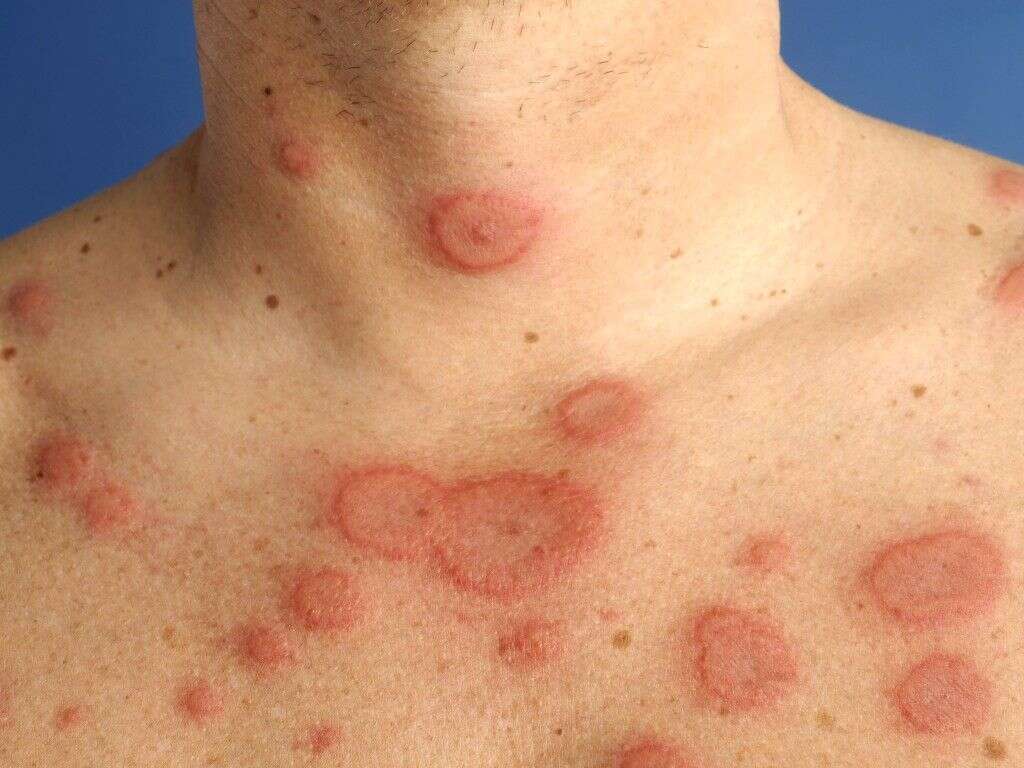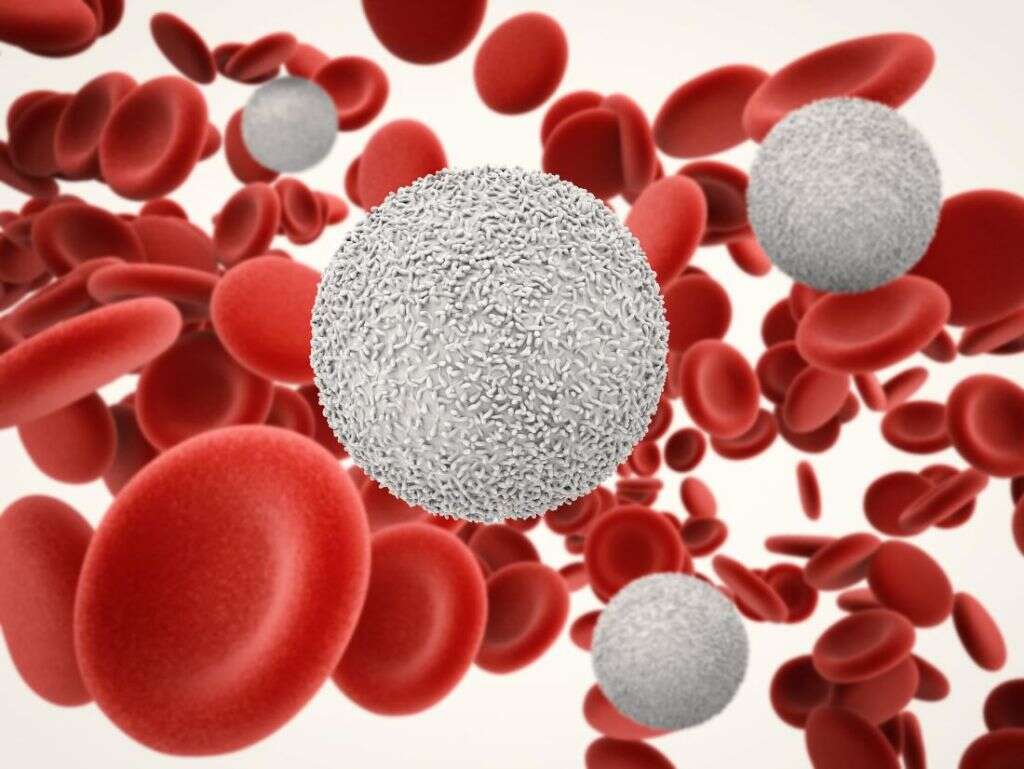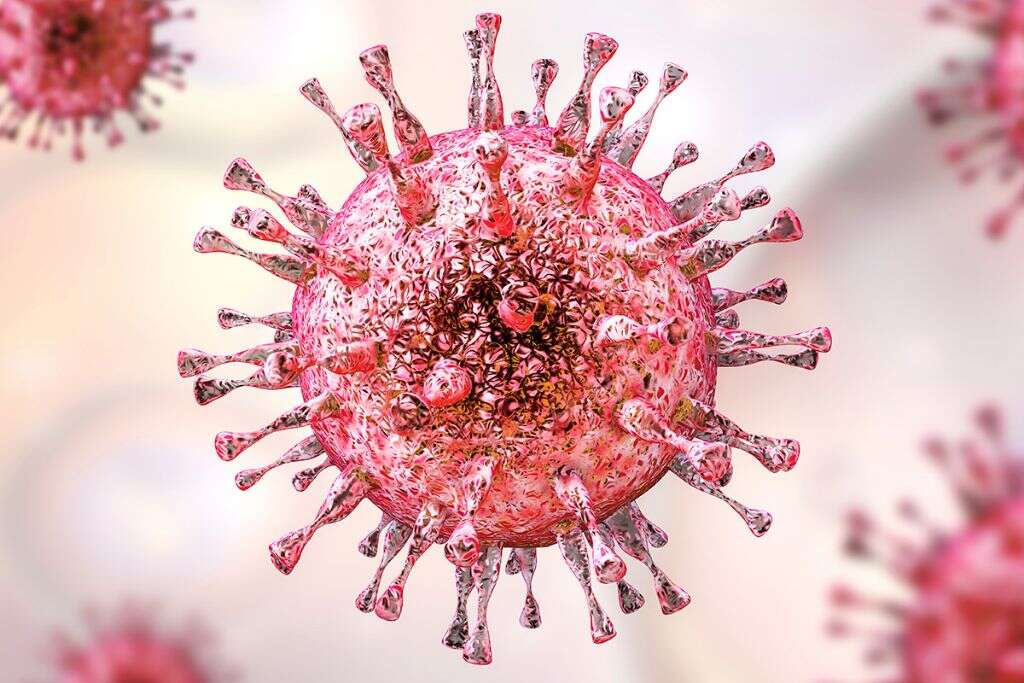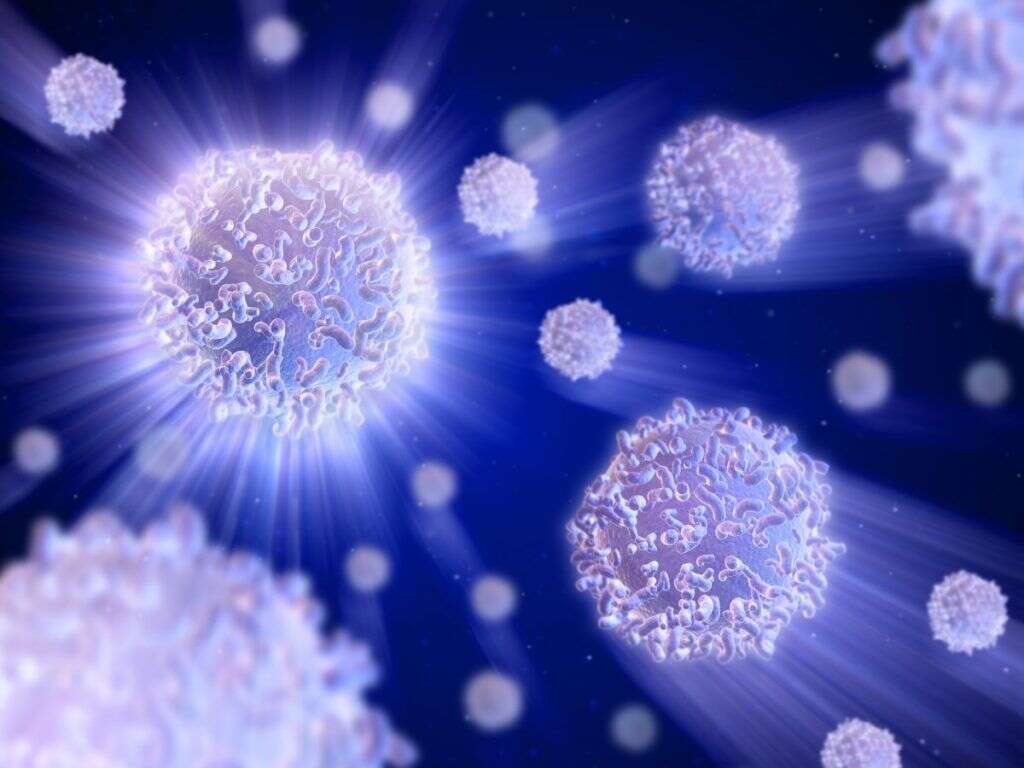What Is Erythema Multiforme?
Erythema multiforme is a rare skin condition characterized by the presence of a specific rash. It can be attributed to a hypersensitivity reaction to medications or infections. Small red lesions and/or raised patches can appear in numerous locations across the body. These patches typically have the appearance of a “bull’s eye” or a target and they often start on the extremities of the affected person. The rash tends to be acute and may involve the mucus membranes, though this is rare.
Depending on the spectrum of severity, there are two variations of the condition: erythema multiforme minor and erythema multiforme major. Typically, mild forms are self-limited and rarely involve complications. However, severe forms of this condition can be life-threatening. Additionally, recurrence is possible in some cases.

1. Signs and Symptoms of Erythema Multiforme
Usually, the primary indicator of erythema multiforme is the abrupt appearance of a characteristic rash. However, depending on the severity of the condition, other symptoms can precede skin manifestations. Erythema multiforme is usually symmetrical and it frequently appears first in the extremities (feet or the backs of the hands) before spreading towards the center of the body (trunk, face, neck).
The lesions in mild erythema multiforme usually start as red spots that rapidly progress to concentric lesions that are shaped like a target. For instance, in the center of the initial lesion, a small vesicle or “bump “develops. Then, a raised and pale ring appears, surrounding the previous lesion. Finally, its borders become purple or dark; thus, forming two concentric rings around the center.

2. Erythema Multiforme Minor
Minor cases of erythema multiforme are more common than the major form. Additionally, people with erythema multiforme minor usually experience mild signs and symptoms. Many people have no manifestations other than the appearance of a localized eruption of the skin that can last roughly 1-2 weeks. Also, in this variation, there is minimal to no mucosal involvement.
The symptoms of erythema multiforme minor are rarely serious. For some, the lesions may become itchy and uncomfortable or produce a burning sensation. It is also possible for people to develop a low-grade fever; however, this is a finding that is more common in erythema multiforme major.

3. Erythema Multiforme Major
Erythema multiforme major presents with more signs and symptoms than the minor form. People with major forms often experience symptoms 1-14 days before the rash begins, which include fever, sore throat, cough, diarrhea, vomiting, and chest pain.
In this form, the skin lesions appear in a similar distribution than in the mild form of erythema multiforme (i.e. they are symmetrical and they start in the extremities). Frequently, the rash affects the mucus membranes, appearing most often on the interior of the cheeks and the lips, which may affect activities like eating or drinking. Additionally, inflammation of the clear tissue that covers the white part of the eye (conjunctivitis) can also occur, resulting in abnormal tear secretion (lacrimation), extreme light sensitivity, a burning sensation in the eyes, and visual impairment. Finally, genitourinary and tracheal lesions may also occur.

4. Risk Factors for Erythema Multiforme
Certain factors can predispose an individual to a higher risk of developing erythema multiforme. Anyone of any age can develop the condition; however, people between the ages of 20 and 40 are more at risk. Also, men are more likely to develop erythema multiforme than women.
People with medical conditions such as lupus (SLE), inflammatory bowel disease (i.e. Crohn’s disease), and HIV infection are at higher risk. In fact, one of the main risk factors for erythema multiforme is recent or recurrent infection with the herpes virus. Similarly, individuals exposed to medications such as corticosteroids, chemotherapy, or radiation are also at risk. Finally, another risk factor for this condition is a previous history of erythema multiforme.

5. Causes of Erythema Multiforme
As previously mentioned, erythema multiforme is the result of an overreaction of the immune system to a molecule (antigen) which would not typically trigger an immune response (hypersensitivity reaction). During this process, certain white blood cells of the immune system (lymphocytes), infiltrate the skin and directly or indirectly destroy skin cells. Importantly, this immune reaction can be triggered by either bacteria, viruses, or chemical products. Nevertheless, almost half of the cases of erythema multiforme are idiopathic, which means that no specific precipitating cause is identified in those cases.
Importantly, infections are a common trigger for this condition and they happen to be more common among children. For instance, a common cause of erythema multiforme minor in young adults is Herpes simplex virus (HSV). However, many other viral and bacterial infections can also trigger this immune reaction. In addition, drugs are also responsible for roughly half of the cases of erythema multiforme major (i.e. sulfa drugs, certain antibiotics, drugs for tuberculosis). Finally, other triggers for this condition such as immunological disorders, foods (i.e. preservatives), malignancies, and tattooing have been reported.

6. Transmission of Erythema Multiforme
The herpes simplex virus is contagious, as are many other infections that potentially lead to the development of erythema multiforme. The condition itself, however, is not contagious whether caused by medications or infection.
People who have erythema multiforme cannot spread the rash to other people in any way. Those who do not have the disorder do not need to be concerned about touching a person with it or being in close proximity to that person.

7. Diagnosis of Erythema Multiforme
A doctor can typically diagnose the affliction with a physical examination. The practitioner analyzes the rash for the characteristics that are indicative of erythema multiforme, such as color, shape, size, and distribution.
The physician may order additional tests to determine if there is an underlying infection causing the condition that needs to be treated. The targeted shape of the lesion can lead to confusion with other causes that exhibit a similar outbreak. Some people mistake the rash for Lyme disease. When it appears in children, there may be a suspicion of child abuse from cigarette burns.

8. Local Treatment for Erythema Multiforme
Often erythema multiforme is self-limited or clears up on its own. It can take several weeks for the rash to disappear, but there are usually no complications. Sometimes symptomatic treatment is sought to deal with uncomfortable symptoms. For instance, the physician may indicate the use of analgesics (pain relief), antihistamines, soothing mouthwashes (i.e. warm saline), and/or topical steroids.
People with severe symptoms may require additional wound care. For instance, liquid antiseptics may be applied to lesions to prevent superimposed infections.

9. Management According to the Cause
There are some differences in treatment approaches for erythema multiforme caused by infection rather than medication. When an infection is determined to be the trigger, treating this underlying issue may be necessary to clear the condition. If the herpes simplex virus is the cause, then it is necessary to treat the virus to prevent recurrences of erythema multiforme. However, note that treating the HSV infection after the appearance of the rash will not alter the course of the condition.
When the doctor determines that medication is the cause for the disorder, it may be necessary to determine which drug is precipitating the reaction if the individual is taking more than one. In this case, discontinuing the use of the medication responsible might be necessary.

10. Prognosis for Erythema Multiforme
People with the major form can have lasting effects from the condition after the rash has gone away. In fact, in comparison with erythema multiforme minor, this condition can require a few weeks longer to clear (i.e. 3-6 weeks). Additionally, many have some degree of scarring, especially when superimposed infections occur on lesions. Importantly, a possibly life-threatening complication of skin infections is sepsis, which is an extreme response of our immune system to an infection. Finally, when the lesions affect the eyes, it can lead to permanent damage.
Most people with erythema multiforme minor recover from the condition in a couple of weeks without complications. Those with mild forms often have no scarring; however, they can commonly experience recurrences (i.e. HSV). When herpes simplex is the cause, recurrences can be prevented.












